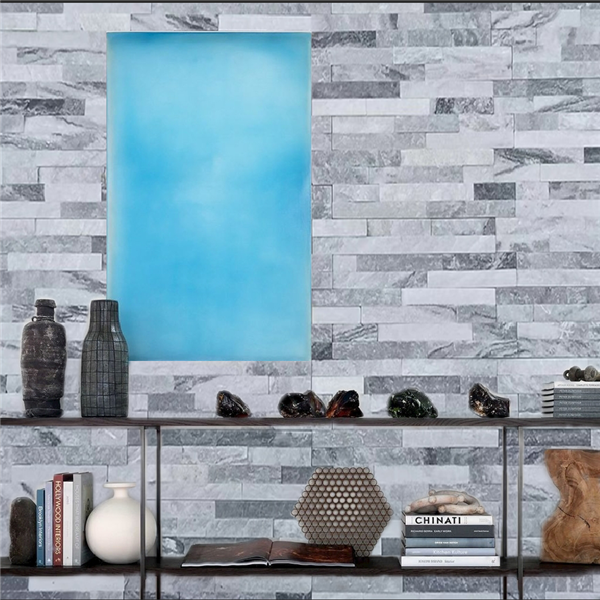The Beauty and Craftsmanship of Moroccan Cultured Stone A Comprehensive Guide
Introduction Moroccan cultured stone, also known as faux stone or artificial stone, is a versatile and aesthetically pleasing building material that has been used for centuries in Moroccan architecture. This type of stone is crafted to replicate the natural beauty and texture of traditional Moroccan stone, making it a popular choice for both interior and exterior design projects. In this comprehensive guide, we will explore the history, production process, applications, and benefits of Moroccan cultured stone. History of Moroccan Cultured Stone The use of stone in Moroccan architecture dates back to ancient times when skilled artisans would carve intricate designs and patterns into natural stone to adorn buildings and structures. Over time, the demand for stone in construction led to the development of cultured stone as a more affordable and accessible alternative to natural stone. Moroccan cultured stone gained popularity in the early 20th century when architects and designers began to incorporate it into their projects to achieve the distinctive Moroccan aesthetic. Today, Moroccan cultured stone is widely used in both traditional and modern architecture, adding a touch of elegance and sophistication to any space. Production Process The production of Moroccan cultured stone involves a meticulous process that aims to replicate the look and feel of natural stone. The process begins with the selection of high-quality raw materials, such as cement, aggregates, and pigments, which are mixed together to create a moldable paste. Artisans then pour the paste into molds that are designed to mimic the texture and shape of natural stone. The molds are carefully crafted to capture every detail and nuance of the stone, resulting in a realistic and authentic finish. Once the paste has set and cured, the cultured stone is removed from the molds and undergoes a series of finishing processes, including sanding, sealing, and coloring. Skilled artisans may also hand-paint the stones to add depth and character, further enhancing their natural beauty. Applications of Moroccan Cultured Stone Moroccan cultured stone can be used in a wide range of applications, both indoors and outdoors. In interior spaces, cultured stone is often used to create accent walls, fireplace surrounds, and kitchen backsplashes. Mixed material mosaic tile for eclectic style and patterns of Moroccan cultured stone can add warmth and character to any room, creating a cozy and inviting atmosphere. In outdoor settings, Moroccan cultured stone is commonly used for cladding facades, patios, and garden walls. The durable nature of cultured stone makes it ideal for withstanding the elements and maintaining its beauty over time. Whether used as a standalone feature or combined with other materials such as wood or metal, Moroccan cultured stone can enhance the curb appeal and visual interest of any property. Benefits of Moroccan Cultured Stone There are numerous benefits to using Moroccan cultured stone in architectural and design projects. One of the primary advantages of cultured stone is its cost-effectiveness compared to natural stone. Moroccan cultured stone offers the same aesthetic appeal and durability as natural stone at a fraction of the cost, making it a budget-friendly option for homeowners and designers. Additionally, Moroccan cultured stone is lightweight and easy to install, reducing labor costs and construction time. The uniform size and shape of cultured stone make it simple to work with, allowing for quick and efficient installation in both residential and commercial settings. Another benefit of Moroccan cultured stone is its versatility in design. Cultured stone can be customized in a variety of colors, textures, and finishes to suit the unique aesthetic preferences of each project. Whether seeking a rustic, traditional look or a sleek, modern design, Moroccan cultured stone can be tailored to meet the specific needs and style of any space. Furthermore, Moroccan cultured stone is low maintenance and highly durable, requiring minimal upkeep to preserve its appearance and longevity. Unlike natural stone, cultured stone is less prone to chipping, cracking, or fading, making it a practical choice for high-traffic areas and outdoor environments. Conclusion  Moroccan cultured stone is a timeless and elegant building material that has stood the test of time in architectural design. With its rich history, meticulous craftsmanship, versatile applications, and numerous benefits, Moroccan cultured stone continues to be a popular choice for homeowners, architects, and designers alike. Whether used to create a stunning focal point in an interior space or to enhance the exterior facade of a building, Moroccan cultured stone adds a touch of sophistication and charm to any project. As the demand for sustainable and aesthetically pleasing building materials grows, Moroccan cultured stone remains a top choice for those seeking to achieve a classic and timeless look in their designs.
Moroccan cultured stone is a timeless and elegant building material that has stood the test of time in architectural design. With its rich history, meticulous craftsmanship, versatile applications, and numerous benefits, Moroccan cultured stone continues to be a popular choice for homeowners, architects, and designers alike. Whether used to create a stunning focal point in an interior space or to enhance the exterior facade of a building, Moroccan cultured stone adds a touch of sophistication and charm to any project. As the demand for sustainable and aesthetically pleasing building materials grows, Moroccan cultured stone remains a top choice for those seeking to achieve a classic and timeless look in their designs.